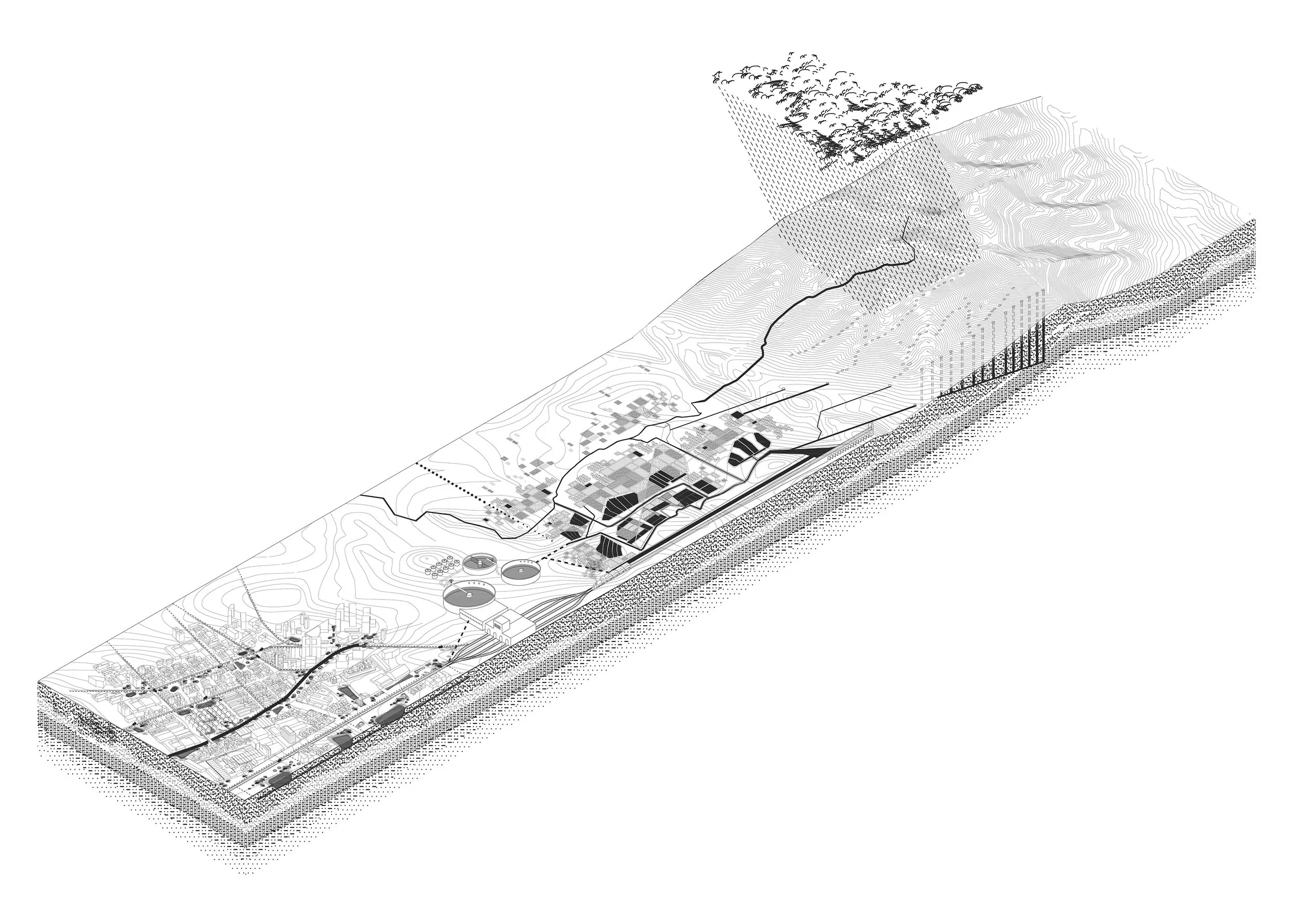Infraestructura y paisaje
Landscape infrastructure design, water scarcity scenarios, and railway systems.
Mexico City, Mexico.
2016
/// Cuernavaca Railroad Linear Park.
Project: adjkm ///. Team: Alejandro Méndez, Daniel Otero, Khristian Ceballos, Mawarí Núñez, Silvia Caradonna, Ainara Ricchiutti, Luisana Villegas, and Valeria Casale ///. Collaborators: Aaron Pineda, Jhon Gancino, and Andrés Rengifo ///. Client: Colegio de Arquitectos de Ciudad de México /// Phase: International competition ///. Surface: 20 HA ///. Program: Landscape, public space, rainwater harvesting infrastructure, treatment plants, urban agriculture, and cultural facilities.



